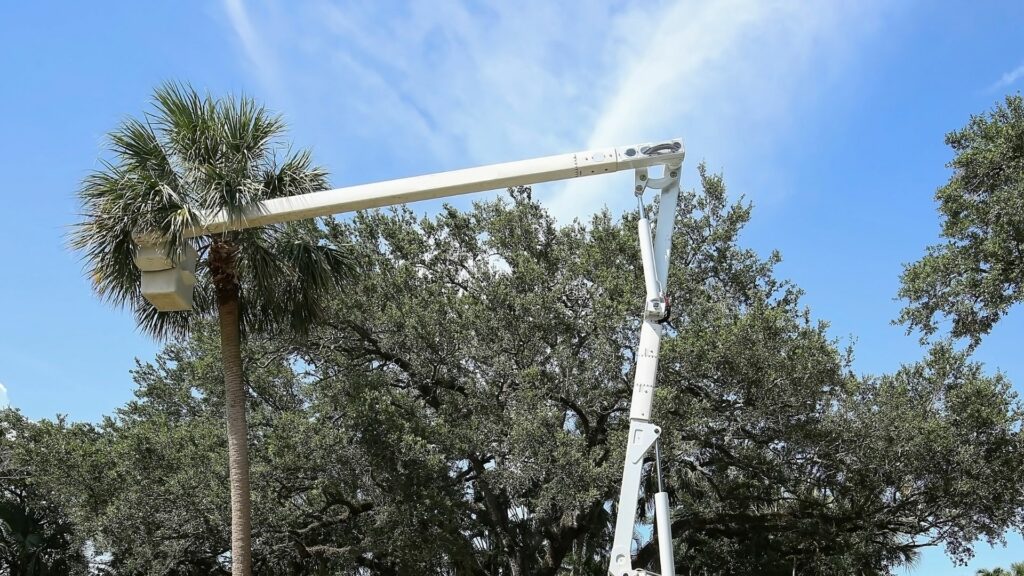Palms add aesthetic value to any garden, enriching the atmosphere and creating welcome shade, but unfortunately, there are situations when it might be necessary to remove these topical-looking trees. But what are the costs involved and what factors should you consider when removing a palm?
The costs of removing a palm tree range between $150 and $1,500 if you use the services of a professional arborist, with the average price being about $200 to $500. The size of the tree and its proximity to power lines and buildings are the primary factors determining removal costs.
The following facts and advice might be helpful for anyone wishing to learn more about the costs and considerations of palm removal.
Removing a Palm Tree: Costs and Considerations

The removal of palm trees (Arecaceae family) is relatively straightforward but careful planning is crucial to ensure the procedure is completed safely and cost-effectively.
The principal factors that determine the cost of palm removal:
- The size of the tree.
- Its position relative to power lines and other infrastructure.
- Whether you remove the tree yourself or call a professional.
It is generally advisable to use the services of an insured and certified arborist or tree feller. These professionals have the expertise and equipment to fell palm trees safely without damaging surrounding electrical wires, buildings, or walls. They also have suitable vehicles to transport palm trunks, fronds, and roots away from the property.
Tree fellers and arborists with appropriate insurance cover and relevant certifications charge anywhere from $150 up to $1,500 to remove a palm, with the average price being roughly between $200 and $500.
The precise cost depends on the height of the palm, and its proximity to surrounding infrastructure:
- 180ft or taller = $1,100 – $1,500
- 60ft to 80ft = $400 – $1,100
- 30ft to 60ft = $200 – $950
- 30ft or less = $150 – $450
The price of removing a palm increases if it is growing near a power line, house, or perimeter wall. This increased cost is due to the complex rope rigging required to direct the tree away from the surrounding infrastructure. In cases where the palm needs to be rigged, you can expect to pay an extra $300 (or more).
Average Sizes of Popular Palm Tree Species
There are dozens of small and large palm species commonly grown on residential and business properties. Some of the most popular palms (and their average heights) include:
- Queen palm (Syagrus romanzoffiana) = 30ft – 50ft
- Foxtail palm (Wodyetia bifurcata) = 20ft – 30ft
- European fan palm (Chamaerops humilis) = 8ft – 15ft
- Dwarf date palm (Phoenix roebelenii) = 6ft to 20ft
- Canary Island date palm (Phoenix canariensis) = 30ft to 40ft
What About DIY Palm Removal?
There are certain situations when you might consider removing a palm yourself. The DIY option can save a significant amount of money, but if you make one mistake, you might cost far more than the price of hiring a professional. It is also critical to consider the safety risks associated with DIY palm removal.
The general guidelines are that you should only contemplate felling a palm yourself if the tree is:
- less than 10ft tall.
- at least 10ft or more away from power lines.
Palm Removal by Utility Companies
If you want to remove a palm situated less than 10ft from a power line, you should contact the relevant utility company. In some states, utility companies will cut the tree down at their expense, so you won’t have to pay for the services of a tree care technician.
Note that utility companies are generally responsible for keeping trees away from supply lines. The companies are usually not legally required to cut trees near service lines (connected to homes and other private buildings), though this depends on the specific enterprise and its line maintenance and protection policy.
Additional Factors to Consider
Besides the size and position of the palm, several additional factors that can make the job of removing the tree more expensive or hazardous.
1. Property Location
The price of removing a palm usually increases when the tree is in a remote rural location, because the technicians need to incur higher travel costs. You will typically pay slightly less if the tree is on a property in a more centralized urban location like a city or suburb.
2. Permits
In some local jurisdictions, a permit might be necessary to legally remove a large palm tree (usually when it is 10ft or taller). Regulatory authorities charge anything from $60 to $150 for a tree removal permit, which the contractor will include in the final price of the job.
3. Tree Accessibility
The accessibility of the palm tree influences the cost of its removal. For example, arborists will charge more to remove a palm when it is:
- in a corner of a small yard,
- on steeply sloping ground,
- in close proximity to power lines,
- at a property that lacks vehicular access.
3. Heavy Machinery
Tree care professionals might need heavy machinery like a crane to fell a palm safely when the tree is particularly large or difficult to access.
Using a crane will significantly increase the cost of the job, adding anything from $500 to several thousand dollars to the final price.
4. The Urgency of Removing The Palm
The cost of removing a palm depends on the urgency of the job.
For instance, if the tree has fallen onto a building or service power line, it needs to be removed immediately, so tree care specialists will usually charge more to perform the task at short notice.
Palms also require urgent removal if their trunks are infected with one of the diseases that commonly afflict the Arecaceae family, such as Ganoderma rot. Dying or dead palm trees are liable to fall over, so they pose a risk to people and infrastructure in the area. In these instances, you can also anticipate a cost increase.
5. Root Removal
What about the root system – should it also be removed along with the trunk?
Palms are vigorous growers, so they might regrow if you chop the trees down while they’re alive. In these cases, it is advisable to dig out the root ball. If this is unfeasible because you might damage infrastructure above or below the ground, kill the roots with herbicide.
Of course, if you cut down a palm that is already dead, the tree won’t initiate new growth, so you can leave the roots in place.
Final Thoughts
Though it is always sad to say goodbye to a palm, you usually need to remove the tree if it is dead, diseased, or posing a hazard to people or surrounding infrastructure.
It is generally preferable to acquire the services of professional arborists or tree fellers, especially if the tree is large (10ft or taller) or if it is near buildings or power lines. DIY removal is only an option if the palms are small (less than 10ft tall) and you are confident you can perform the job safely.

